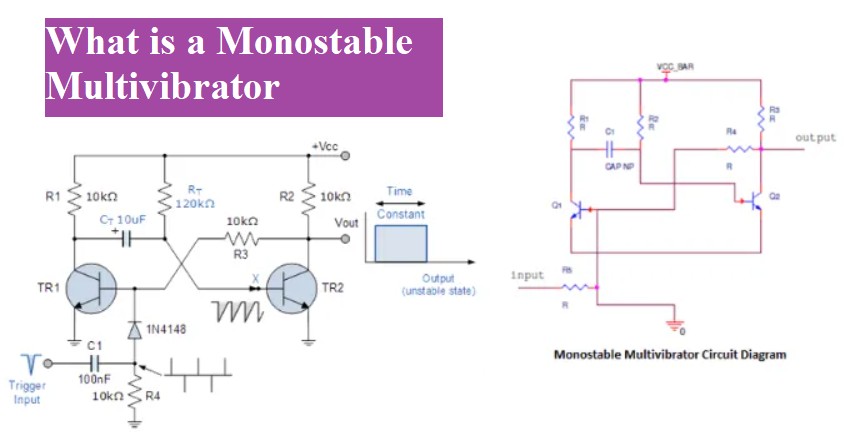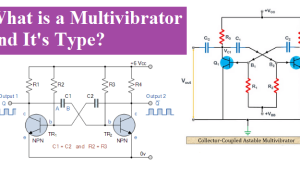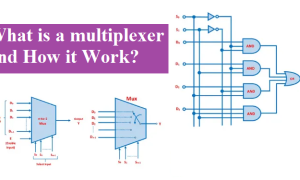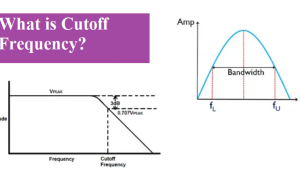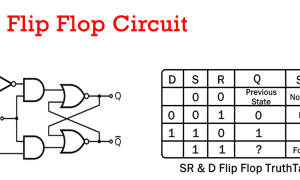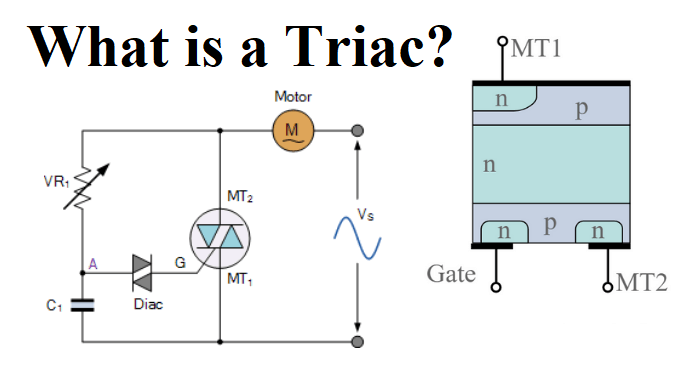A multivibrator is sequential regenerative electronics circuit either synchronous or asynchronous and it is use in electronics timing applications. The multivibrator are three types Astable multivibratior, Bistable multivibrator, and Monostable multivibratior. We already discuss about Astable and Bistable Multivibratior, in this tutorial we are going to discuss about Monostable multivibratior.
Monostable multivibrator
A monostable is an electronics circuit, as the name implies, has only one stable state. In this type of multivibratior, one transistor conducts and second transistor is non-conduct. A stable state is that state where the transistor remains without being altered, unless disturbed by external trigger pulse. As monostable work on the same principle so it is also called one-short multivibratior. It is use in oscillator, timer and flip flops.
A multivibrator produces a symmetrical and asymmetrical square wave and that’s why a multivibrator is mostly use in square wave generator. It belongs to an oscillator family so it is commonly called Relaxation Oscillators.
Generally, a multivibrator is the cross coupling of two transistor so that one or more of its output are fed back to input to the other transistor with a resistor and capacitor network connected across them to produce the feedback tank circuit.
A multivibrator is a two different state i.e. electrical “high” and electrical “low” state giving them either a stable or quasi-stable state depending upon the type of multivibrator.
The monostable multivibrator has only one stable state (their name “mono”), mans produce a single pulse in output when triggered is applied. It returns back to original and stable state after a time period. The time period is determine by the resistor and capacitor (RC) network.
Monostable Multivibrator Circuit
The two transistors TR1 and TR2 are cross coupled with each other. The collector of TR1 is connected to base of TR2 with capacitor CT and the collector of TR2 is connected to base of TR1 with resistor R3. The trigger pulse is applied to the base of TR1 through the capacitor C1 to change its state. The load resistor of TR1 and TR2 is R1 and R2 respectively.
The monostable multivibrator circuit diagram is given below:-
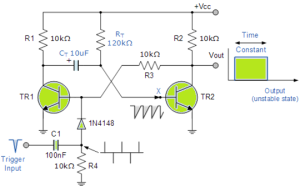
Monostable Multivibrator working
Let us suppose, initially the transistor Q1 will be in OFF state and Q2 will be in ON state and this is a stable state. As the transistor Q1 is off, the collector voltage of Q1 will be VCC and the capacitor C1 gets charge with supply voltage. This charge capacitor provides the transistor TR1 stay at ON position. When external trigger pulse are provided through the capacitor C1 and diode. The transistor TR1 is become ON and starts conduction. Due to turn ON TR1 will decreases the collector voltage which turn OFF the TR2 and the capacitor start discharging. The positive collector voltage is of TR1 is applied to the base of TR1, it remain turn ON TR1. This is called Meta-stable state or quasi-stable state.
The monostable multivibrator can produce a short and longer rectangular pulse. The shape of rectangular pulse is depends upon the trigger pulse and RC networks. The leading edge and trailing edge of rectangular wave is depends on the trigger pulse and RC network time constant respectively. The time constant may be varied, which are shown below.
Monostable Multivibrator Waveforms

The time constant of monstable multivibrator may be change by varying the value of RC network. The pulse width output is dependent on resistor and capacitor network “RC” the pulse width duration formula is T=0.69 R1C1
This multivibratiorn is use where the wider pulse width is required or to produce a time delay within a circuit.
Advantages
The advantages of Monostable Multivibrator are given below:
- One trigger pulse is enough.
- Its circuit design is simple
- Low cost
Disadvantages
The major drawback of the monostable multivibraitor is that the timing of trigger pulse is greater than the RC time constant of the circuit.
Applications
It is use in television circuit and control system circuit. It is also use in oscillator, counter and flip flop.
People also ask
What is application of monostable multivibrator?
Applications of monostable multivibrator.
It is use in delay circuit, temporary memory, trigger another pulse generator and regenerating old and worn out pulses.
What is the principle of a monostable multivibrator?
This vibrator is a only one stable state and produced a constant output when it is not applied trigger pulse. If trigger pulse is applied it goes to unstable stage. After removing trigger pulse it comes on original stage after a time period is depend on RC networks.
What is monostable and astable multivibrator?
An Astable multivibrator in which the circuit has no stable sate. It is continuously switches state from one to other. It functions as a relaxation oscillator. While the Monostable multivibrator, in which have only one stable state and other is unstable state.
What is multivibrator and its types?
Multivibertor is and electronics circuit that are use to generate non sinusoidal wave like square and rectangular wave and it is use in various application like oscillator, timer and flip flop. The multivibrator are three types: – astable multivibrator, bistable multivibrator and monostable multivibrator.
What is monostable and bistable?
Monostable – A monostable multivibrator has only single stable state. It use two cross coupled transistor to generate output. It changes the state when trigger is applied and after removing of trigger pulse it return back to original state. Bistable – In bistable multivibrator has two stable states. And its state is depending of the trigger pulses.

